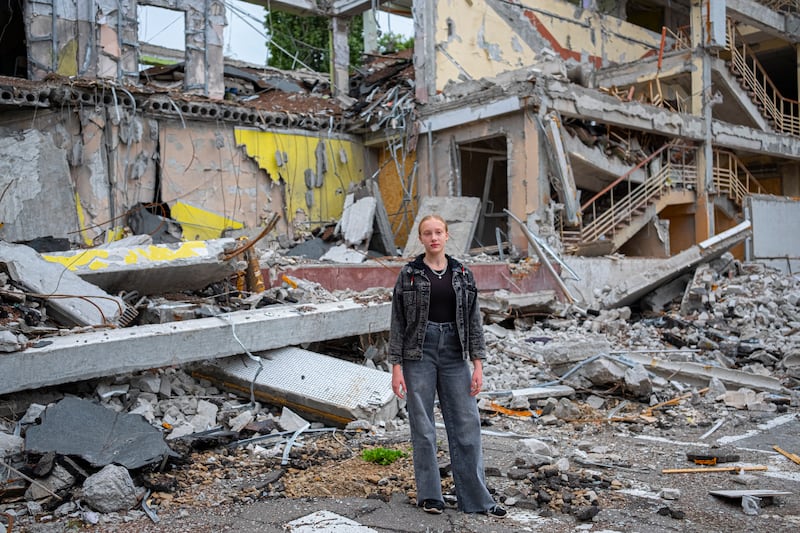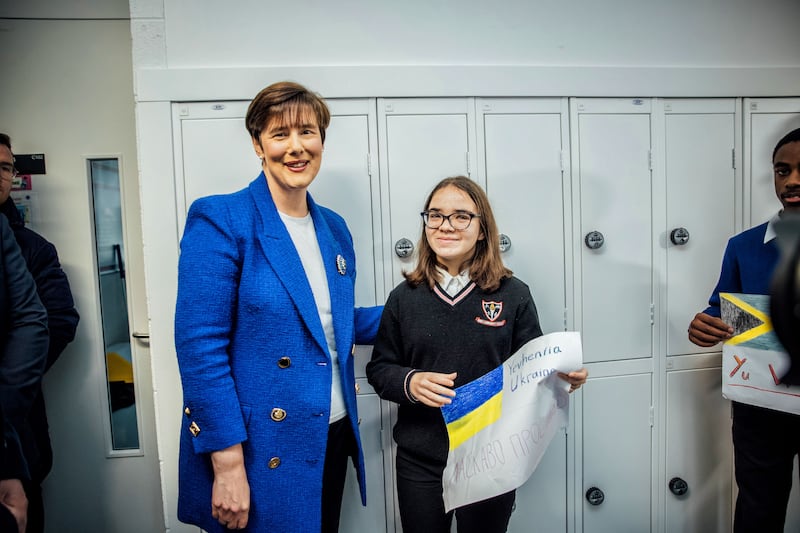Some 92 per cent of Ukrainian refugee children who have arrived in Ireland are enrolled in Irish schools, one of the highest rates across Europe.
A report by Unicef this week estimates that about 66 per cent of displaced Ukrainian children are not currently enrolled in host countries’ education systems.
It said there are several factors behind this, including stretched education capacities, rules around compulsory education and the fact that many refugee families have opted for online learning.
In Ireland, as of the end of 2022, a total of just over 13,750 Ukrainian pupils were enrolled in schools. Most of these – about 8,800 – were in primary schools, with some 4,900 pupils in post-primary schools.
Efforts to rearm Europe stumble as Trump ‘kicks over the chessboard’ of the Ukraine war
US ‘demanding all of Ukraine’s natural resources for years’
European leaders united in opposition to lifting sanctions on Russia as condition of ceasefire in Ukraine
Taoiseach joins Zelenskiy and European allies in Paris to discuss further Ukraine aid, security assurances
Central Statistics Office data indicates this equates to an enrolment rate of 92 per cent among Ukrainian children aged 6-18.
In Ireland, all children from outside the State, including asylum seekers, refugees, migrants and unaccompanied minors, can access preschool, first- and second-level education in a manner similar to Irish nationals until they reach 18 years.
A spokesman for the Department of Education said schools across Ireland have welcomed children of all backgrounds and nationalities.
[ Ukrainian refugees should have ‘pathway’ to Irish citizenshipOpens in new window ]
“The department’s main responsibility is to ensure that schools in an area can, between them, cater for all pupils seeking school places in that area,” he said.
Official surveys last year indicated there was plenty of spare capacity in the Irish education system overall, with about 54,000 spare school places at primary level and 20,000 at second level.

There are concerns, however, about potential shortages in local areas with a concentration of refugees in hotels or other centres.
Contingency plans drafted by Department of Education officials state that in these circumstances, schooling may need to be carried out in hotels, community centres or churches.
Another option, according to the records, is to consider “double shifts” in existing schools, such as having a first shift from early morning to early afternoon, and a second shift from early afternoon to later in the evening.
So far, however, such options have not been needed.

An EU report in December estimated that about half a million Ukrainian children were enrolled in education systems across the EU.
The highest enrolment rates were in countries with compulsory school attendance, while rates varied in member states with no such obligation.
Several member states also noted lower enrolment rates for children in secondary education and children close to the end of compulsory schooling.
Meanwhile, Unicef said it will continue working with the authorities in Ukraine and host countries to help deliver solutions to help children in conflict areas and those who have been displaced from their homes to continue their education.
Russia’s invasion of Ukraine has disrupted education for an estimated 5 million children.
Unicef estimates that more than 1.9 million children in Ukraine have been accessing online learning opportunities, while 1.3 million children have been enrolled in a combination of in-person learning and online.
However, recent attacks on electricity and other energy infrastructure in Ukraine have caused widespread blackouts and left almost every child there without sustained access to electricity, meaning that even attending virtual classes is an ongoing challenge.

The continued use of explosive weapons – including in populated areas – has meant that thousands of schools, preschools and other education facilities across the country have been damaged or destroyed. At the same time, many parents and caregivers are reluctant to send children to school due to safety concerns.
“Schools and early childhood education settings provide a crucial sense of structure and safety to children, and missing out on learning could have life-long consequences,” said Afshan Khan, Unicef’s regional director for Europe.
“There is no pause button. It is not an option to simply postpone children’s education and come back to it once other priorities have been addressed, without risking the future of an entire generation.”












